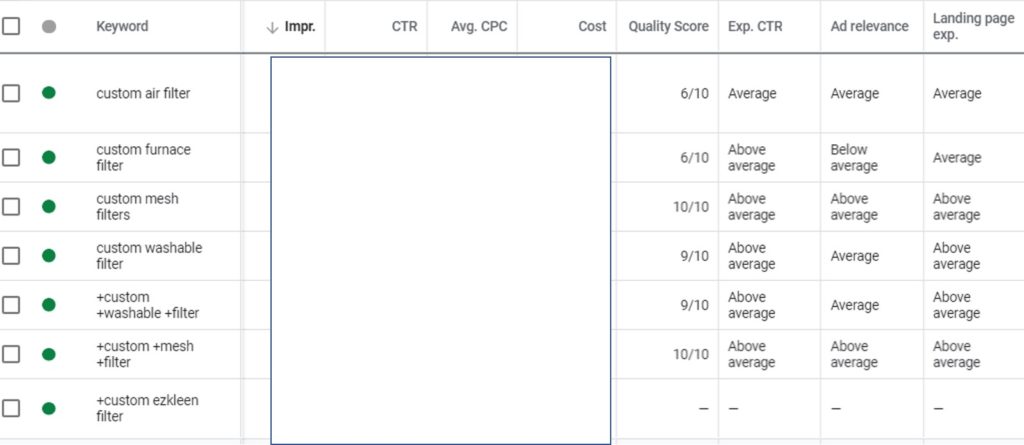Today’s post is all about Quality Score – what it is, why you should care, and how to drive it higher.
What is Quality Score?
Each keyword in Google Ads has a Quality Score, which ranges from 1-10 (1 being the lowest and 10 being the highest) and reflects Google’s assessment of the quality of your ads, landing pages, and keywords. A low quality score means you have to bid higher to get noticed, and you will pay more for every click than a competitor that has a higher quality score. Conversely, a high-quality score means you can bid lower to get the same level of visibility.
Why Should I Care?
You want to aim for high-quality scores not just to lower your costs, but also because higher scores indicate you are providing a better, more relevant customer experience.
How Am I Doing?
In the keyword report, simply add the “Quality Score” column to see how each keyword is rated. The Quality Score is a function of three factors:
- Ad Relevance- how relevant is the ad to the user’s search, i.e., how helpful or useful is it based on the user’s search intent?
- Expected Click-through Rate – how likely is a user to click on your ad when it is served up for that keyword?
- Landing Page Experience – does the landing page content match what the ad promised?
You can also add each of these three factors as columns to the keyword report. The columns have three possible values – Average, Above Average and Below Average. This will give you a clear picture of what you need to work on to improve the keyword quality score.

How do I Improve Quality Score?
To improve your quality score, focus on the factor that is lagging, i.e. Below Average.
Expected Click-through Rate– CTR varies widely across products and businesses, so a good start is to look at the averages in your own campaigns and identify under-performers. As far as absolute numbers go, per Google, you should aim for a CTR higher than 1%
For keywords with “Below Average” expected CTR, first check your ads to see if they include that keyword. If not, add the keywords to ad copy. The exception to this would be keywords with low or no impressions over an extended period of time, which indicates that people don’t really search for them – these keywords are best deleted.
Ad Relevance – Ads should be specific, relevant and have a clear call to action. Ideally, they should contain a combination of the keywords you are using. Check your ad copy against your keywords and make sure you have a clear call to action.
Landing Page Experience– Check the destination page and make sure it contains information that helps a user who would use that keyword. Does it answer questions the user may have? For e-commerce sites, make sure the landing page has the right level and amount of detail, depending on whether it’s a category page or a product detail page. For a service, make sure the user understands what exactly is provided; it would be good to give them a sense of pricing too. Help them understand why they should be spending time and money on your product or service. Finally, check to see if you are using keywords in the copy. Other areas to check are page load times and overall user experience, e.g. pop-ups are distracting so you want to limit their usage.
Ad Group Structure– The last thing to check is the ad group structure within your campaign. Since your ads, keywords and landing pages need to be consistent, using a jumble of keywords is not helpful. It is best to sort your keywords into groups that make sense from a user search perspective and create separate ads for each group, preferably with unique landing pages e.g. for a client that sells EZKleen air filters, I started off with one ad group using branded keywords. However, I discovered that people were searching for filters in different ways. The highest volume of searches (and conversions) was for washable or reusable air filters. I quickly created two new ad groups, one for washable filters and one for reusable filters, with new keywords based on those search terms. This improved quality score across all three ad groups.
Next week we will look at Conversions and ROI.
